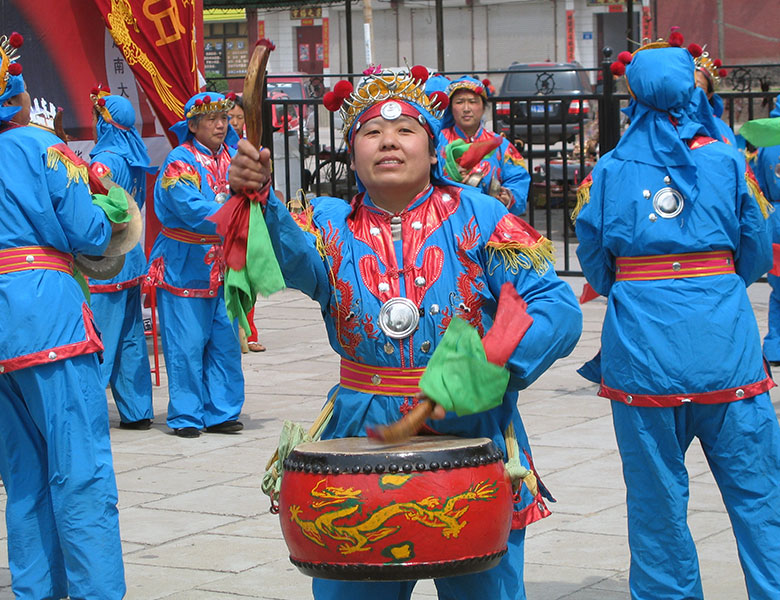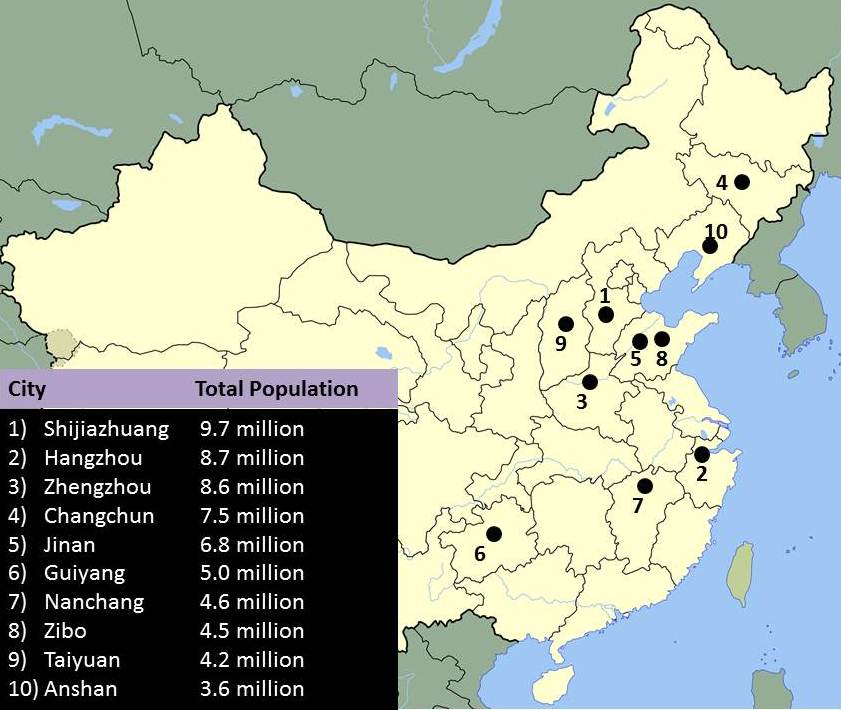China already has more than 150 cities with populations of more than one million people and could have as many as 221 cities with one million or more people by 2025, according to the McKinsey Global Institute (MGI). Yet relatively few of China’s larger cities, each with its own special history and contributions to China’s development, are known outside of China.
Indeed, we suspect that even Chinese from major coastal metropolises are relatively unfamiliar with many of the sizeable but lower-profile cities in China’s vast hinterlands. Thus, this research note selects 10 of China’s largest, but less well-known cities and provides a brief profile of each. Our list, shown in Exhibit 1 (below) is based on taking the most populous cities in China and excluding Beijing, Shanghai, Tianjin, Guangzhou, Shenzhen, Harbin, Qingdao, Wuhan, and several other large Chinese cities that are reasonably well-known outside of China.
Exhibit 1: China’s 10 Biggest Cities You’ve Probably Never Heard of
Location and total urban area population
Source: National Bureau of Statistics, Changchun City Gov’t, Hangzhou Daily, Sina.com, Taiyuan Evening News, Luzhong Morning Times, China Nanchang News Net, People’s Daily, Anshan City Gov’t, SoHu
How the 10 Cities stand out
The 10 cities featured in Exhibit 1 each have unique characteristics but share the common trait of being large, dynamic metropolises that typically fly under the global radar screen despite being home to a combined total of more than 63 million people—roughly the populations of California and Texas combined. The cities featured in the list accounted for 2.7 trillion RMB of GDP in 2010—approximately 7% of China’s national GDP. These 10 cities’ economic output is larger than the 2.6 trillion RMB combined GDP of Beijing and Shanghai, the two largest Chinese cities by economic output. These 10 cities are as large a part of China’s economy as Chicago and Washington, D.C. are of the U.S. economy.
Shijiazhuang is the capital of Hebei Province and is also a major transport, agricultural, and industrial hub. Hangzhou has been a prominent Chinese city for more than 1,000 years and is renowned for its natural beauty—especially the West Lake—and its longstanding role as a major commercial and industrial center. Zhengzhou is the capital of Henan and is a transportation hub for Central China, a populous and important region whose GDP growth averages several percentage points higher than that of the Chinese East Coast. Zhengzhou is also a hub for at least 23 other regional cities, according to MGI. Changchun is the capital of Jilin Province and is often dubbed “China’s Detroit” due to its prominence in automobile production. Jilin Special Steel is now building one of the world’s largest stainless steel plants near Changchun, with an initial production capacity of 500,000 tonnes per year, according to Steel Orbis.
Jinan is the capital of Shandong Province, one of China’s most populous provinces (more than 94 million inhabitants) and a cradle of early Chinese civilization. The city is known for its large number of springs and artesian wells, which have special significance in Northern China due to the region’s dryness. Guiyang is the capital of Guizhou, one of China’s poorest provinces. The area around the city is home to major aluminum smelting operations and the city is unique among large Chinese cities in that hydropower supplies the bulk of its electricity needs.
Nanchang is an agricultural center and once served as the dynastic capital of Southern China. Zibo is another major Shandong city and is a center of excellence for ceramics production. Taiyuan is a heavy industry center located in the heart of China’s Coal Belt and is home to TISCO, one of the world’s largest stainless steel producers by volume and the largest producer in China. Taiyuan’s financial services sector now accounts for more than 5% of GDP, less than the 10%+ of cities such as Beijing (MGI), but represents a marked move to diversify the city’s economic base. The final city, Anshan, is a key Chinese industrial center and is home to Angang, one of China’s largest steelmakers, which can produce more than 20 million tonnes per year of crude steel.
Implications
China’s urbanization is set to affect global food and energy demand, the consumption of steel, copper, concrete and other construction materials, and global emissions profoundly. There is a high probability that in the next 15 years, as many as 240 million rural Chinese—more than 3/4 of the current population of the U.S.—will move into the cities. This presents major challenges as well as real opportunities to apply hard learned lessons from urban development around the globe.
The 10 cities profiled in this note and China’s many other cities with more than one million residents offer a wealth of business opportunities. Furthermore, the hundreds of large emerging cities throughout China can offer living laboratories for employing new policies and models of urban development that allow China’s aspiring working class to achieve the lifestyle they seek, but in ways that are less resource intensive than the development patterns of the United States and other G7 countries.



